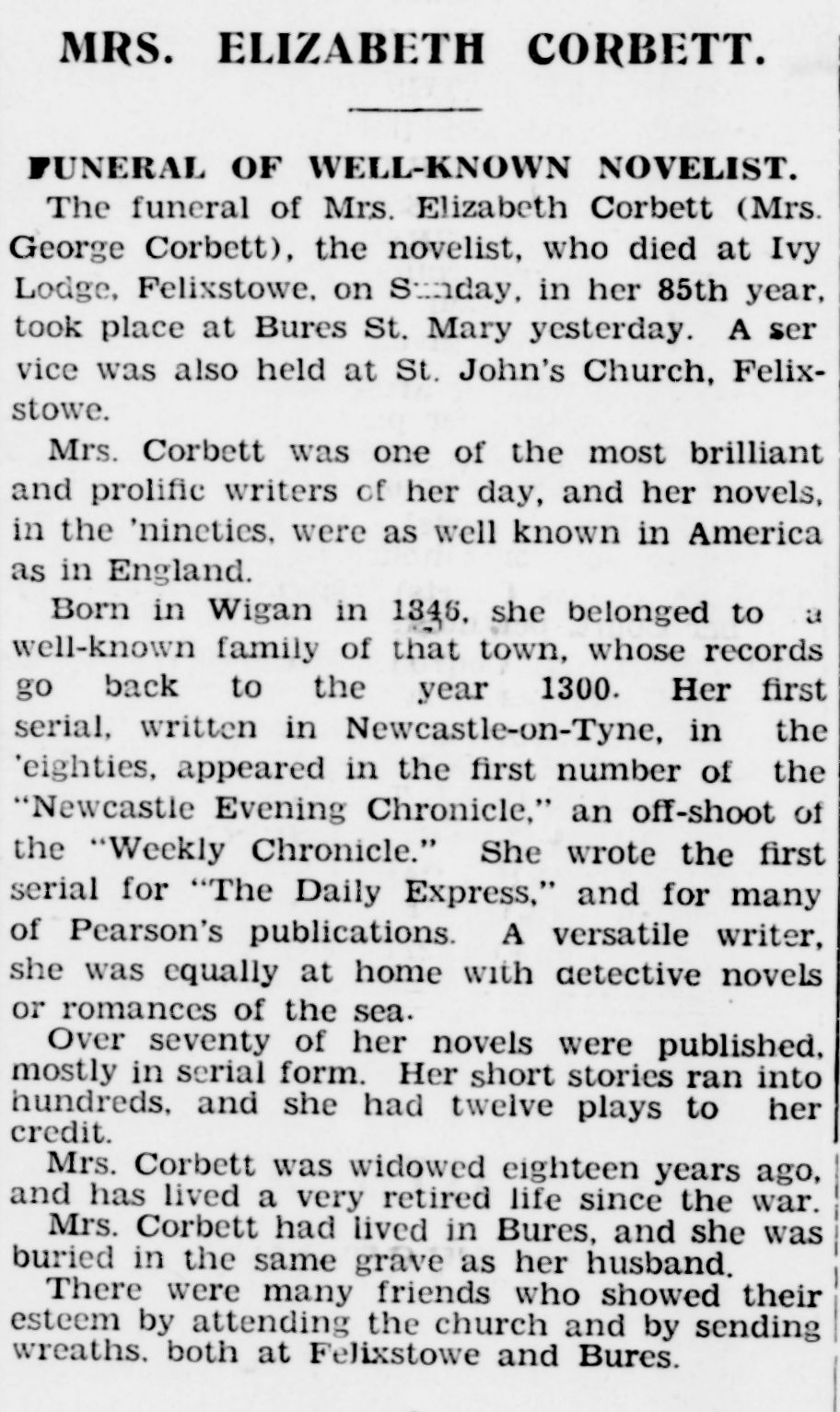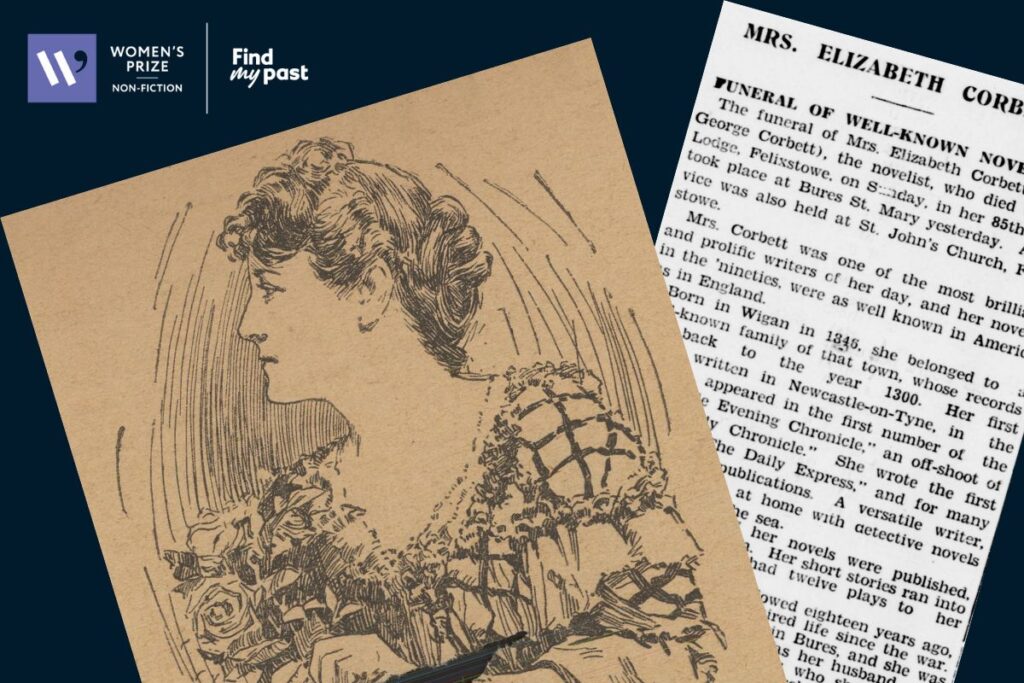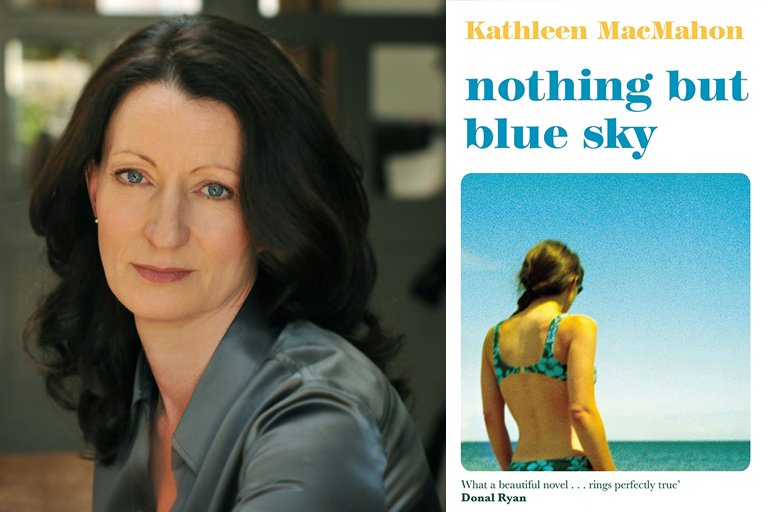This month, Findmypast, sponsor of the 2025 Women’s Prize for Non-Fiction, are shining a light on the legacies of 68 million women who could go unrecognised in history because census records have labelled them as ‘unoccupied.’ Through analysing over 150 years’ worth of census records, they’ve illustrated the lack of detail attributed to the lives of millions of women throughout history – with 60% of the working-age female population overlooked because the records report women’s identities based on their marital status or household duties, leaving broader activities and achievements to be unrecognised.
In light of this research, in collaboration with Findmypast, we’ve provided a spotlight on one incredible woman’s achievements – journalist, novelist and playwright, Elizabeth Burgoyne Corbett.
Read on to learn more about her story.
Introducing: Elizabeth Burgoyne Corbett
Elizabeth Burgoyne Corbett (Mrs George Corbett) was a novelist, playwright and journalist of Newcastle Evening Chronicle. She was born near Wigan in 1847, then lived in Sheffield, Newcastle, and finally London. By delving into her family history records and newspapers, it shows a woman who moved around, grew in popularity as an authoress and journalist, dabbled in playwright and charity work, and ultimately carved her own career.
Her Writing
Elizabeth became a journalist for the Newcastle Weekly Chronicle, writing articles, essays and poems. By 1881, she published her first novel. She reportedly published over 200 short tales and 33 novels. Throughout the 1890s, Elizabeth wrote plays often starring her children – including a play for charity for the Working Men’s Club which starred her daughter Lillian.
Though she wrote at a time where traditional values and gender roles were upheld, Elizabeth’s work – adventure stories, mysteries, mainstream fiction, and futuristic tales – have feminism woven through them. In response to Mrs Humphrey Wards’ 1889 An Appeal Against Female Suffrage, Mrs George Corbett wrote New Amazonia: A Foretaste of the Future. A speculative fiction novel, the book explores themes of gender equality and social reform, wherein it is imagined a successful suffragette movement has led to a future society where women have dominated all aspects of society in creation of a new nation called New Amazonia. She also wrote one of the earliest female detective characters in fiction, Annie Cory. Many of her novels were only ever magazine serials and not published as books. Learn more about her work via the extract below.

From the Felixstowe Times - 27 September 1930
Census Records
Elizabeth first appears in the 1851 Census along with her family – parents Benjamin and Mary Burgoyne, and her 1-year-old twin sisters, Sarah and Mary. A newspaper article states that her parents were of “French extraction” and spent some time in Germany aged 11 and Elizabeth was educated there, which may account for her not appearing in the 1861 Census.
It is not until 1881 that Elizabeth lists her occupation as ‘authoress’, when she’s in Newcastle with her two daughters, Minnie and Lilian (born 1873, Sheffield), and her widowed mother-in-law, Mary Barton. The records show that 1911 and 1921 Elizabeth is listed as a novelist.








